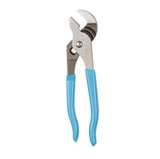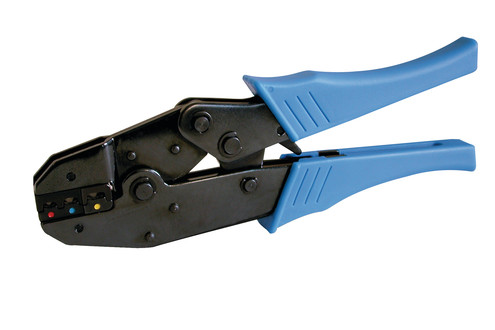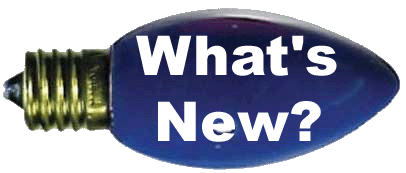

![]()
For pixels I have
Networking tool for creating my own patch cables. I also use it to strip the cover off of cat5 for all the pigtails.
Wire stripper
Network Cable Tester
Precision screwdriver kit
Digital soldering station, upgraded to a Hakko soldering station, very nice
Octopus wire holder since I don't have 3 hands
Lots and lots and lots of heat shrink tube. I like the 1/8" dual wall and the 3/8" dual wall
Pixel pliers. Invaluable if using pixel strips.
These are some of the tools that I use when I worked with incandescent lights.
The biggest complaint I hear about Christmas lights is that they always go out. The one tool that
I always have on hand is the Light Keeper Pro. I think there are two versions, one for incandescent lights and one for LED. I only use the incandescent version.

You've probably seen them at the store and didn't know exactly what it was or how it would help. The tool has two functions that I use for every string of mini lights that is out. The first is the shunt repairer. The shunt is a little piece of metal wrapped around the bottom of the light bulb. This is supposed to keep the string lit even if one bulb goes out. I remove a light bulb from the bad string, stick the socket in the tool and squeeze the trigger a few times. With any luck the shunt will repair and the string will light up. If not I will take the string to a dark room and try again. This time I'll be looking at the bulbs looking for a spark. The spark indicates a shunt that can't be repaired. I'll replace that bulb and see if the string works.
If none of this helps then I'll try the electric detector. This feature can tell if there is electricity flowing through the wire and will beep. I'll put all the bulbs back and place the front of the tool at the nearest bulb, push down the button on top and wait for it to beep, then I'll slowly move the tool along the string. Again with any luck the tool will stop beeping when it gets to a bulb where the electricity stops flowing. Replace that bulb and repeat. If the tool beeps along the whole way and the shunt repair hasn't worked then the string gets recycled.
The tool is definitely worth the $20.
A good pair of wire strippers is a definite must have. I have two pairs. One for your normal
household electric. Great for cutting and stripping romex. It does the bulk of my work on the
12 and 14 gauge wires.

I also have a smaller pair that just strips wires from 14 - 24 gauge.
These come in handy if you want to repair mini light strings as the wire is more like an 18 gauge.

A network cable crimper tool and plenty of RJ45 connectors for making your own patch cables to go from
box to box.
An awl is needed if you ever plan on doing anything with coroplast.
The hole it makes is the perfect size to fit a mini light into snuggly.

If you plan on making your own extension cords with vampire plugs I find that a set of channel lock pliers makes squeezing the caps on a heck of a lot easier than trying to do it with your hands.
Especially if you plan on doing a hundred or so.

Other tools I use include:
A very small screwdriver for my older boards as they require the wire to be set in place with a small screw.
A hammer for pounding in the rebar for the arches, spikes to hold the trees out front or guy wire pins for the stick and spiral trees.
A roll of electrical tape for quick repairs of wire.
Electrical tape and a silver sharpie for marking each set of lights and extension cords to make it easier next year when trying to figure out where everything goes. Although a labelmaker would make this easier and much more legible than my chicken scratch. But I've heard the ink disappears quickly being in the sun and weather.
If you use the PC boards and plan on putting on your own connectors then a quick connect crimping tool will be necessary. Just be sure to get the correct tool, some are made for non-insulated connectors and others for insulated connectors. I got a ratcheting one.

You will also need a good supply of 18 gauge connectors.
I find ebay to be a good site for these. Look under car audio.

A bunch of zipties. They come in handy for all kinds of jobs. I use them for wire management.
I use 4" and 8" ties.
When it comes to clips for attaching the lights to the shingles/gutters I have my favorites.
This clip is my preferred clip for mini lights and icicle lights. It is sturdy enough to hold multiple
strands and slim enough so when I put lots of lights up they don't get too crowded.
image coming soon
This clip is my preferred clip for C9 and C7 lights.

I attach the clip to the socket then ziptie the ends closed.
When it comes to taking down the lights I just give it a yank and everything comes down. I'm not left with lights in my hand and clips on the shingles. I think I find these at either Lowes or Target

|
Last updated on
10/04/2022











